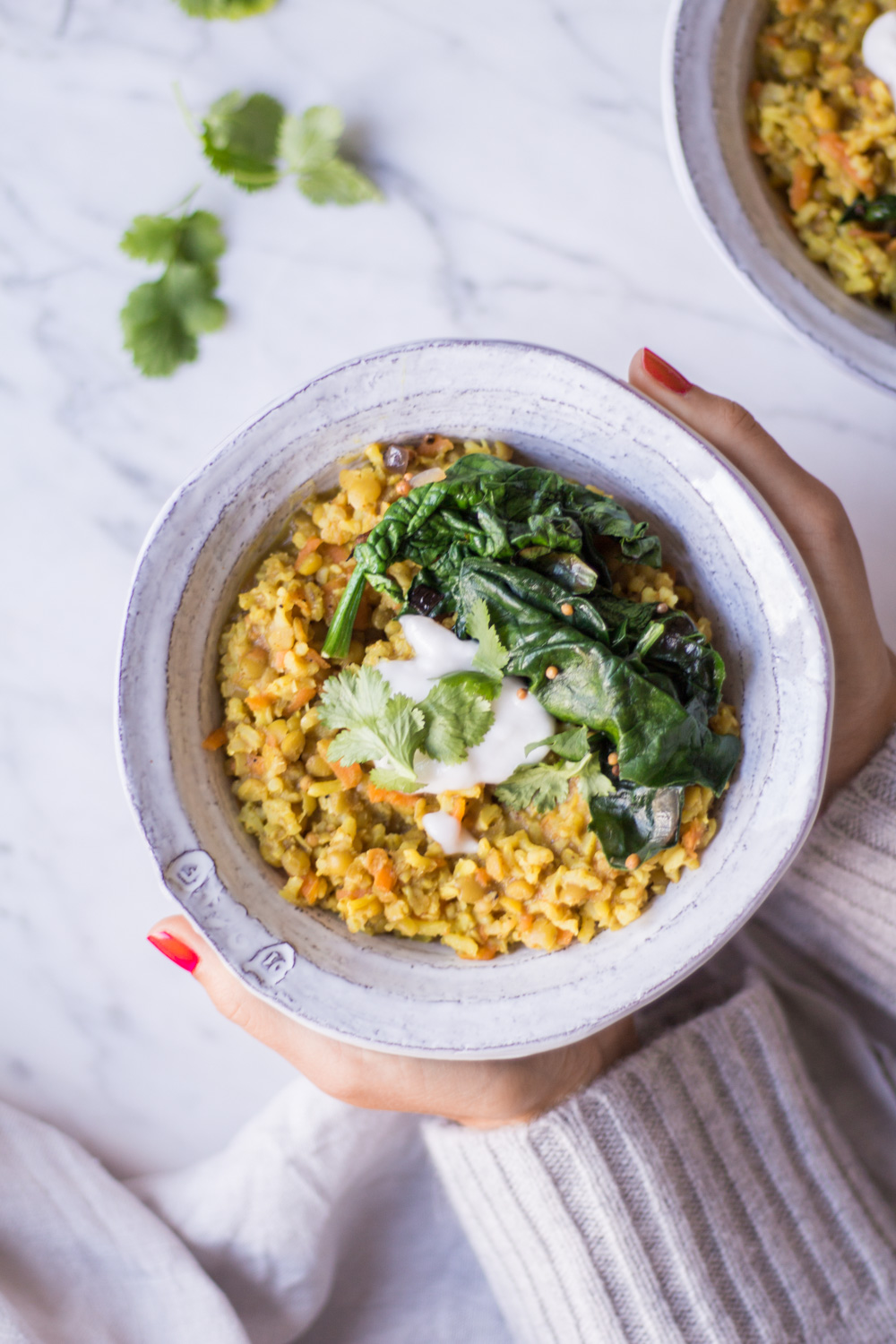 Hello friends! I’m back and crazily, it’s already the third of January. January means new beginnings and change. Of course I am the biggest advocate of a changing your diet. Nevertheless, I would like to once again express my dislike of diets and other drastic measures that the dietary industry would like to sell us at the beginning of the year. Not only do they pull money out of our pockets, but the industry also takes away the energy from our body.
Hello friends! I’m back and crazily, it’s already the third of January. January means new beginnings and change. Of course I am the biggest advocate of a changing your diet. Nevertheless, I would like to once again express my dislike of diets and other drastic measures that the dietary industry would like to sell us at the beginning of the year. Not only do they pull money out of our pockets, but the industry also takes away the energy from our body.
„I’ve changed the world on a low-calorie diet“ – said not one ever. So please, everyone, let’s stop this dieting nonsense, and embrace real, whole foods instead. Thank you.
While we’re at it: I’m not at all against the idea of giving your body a break and giving it time to rejuvenate and cleanse. I’m not using the word detox here, because we don’t need fancy superfoods or supplements to detox our body. It can do this work on its own, and in fact, it’s doing it right as you’re reading this. Our liver cleanses our body every single second, so no need for expensive detox teas or supplements.
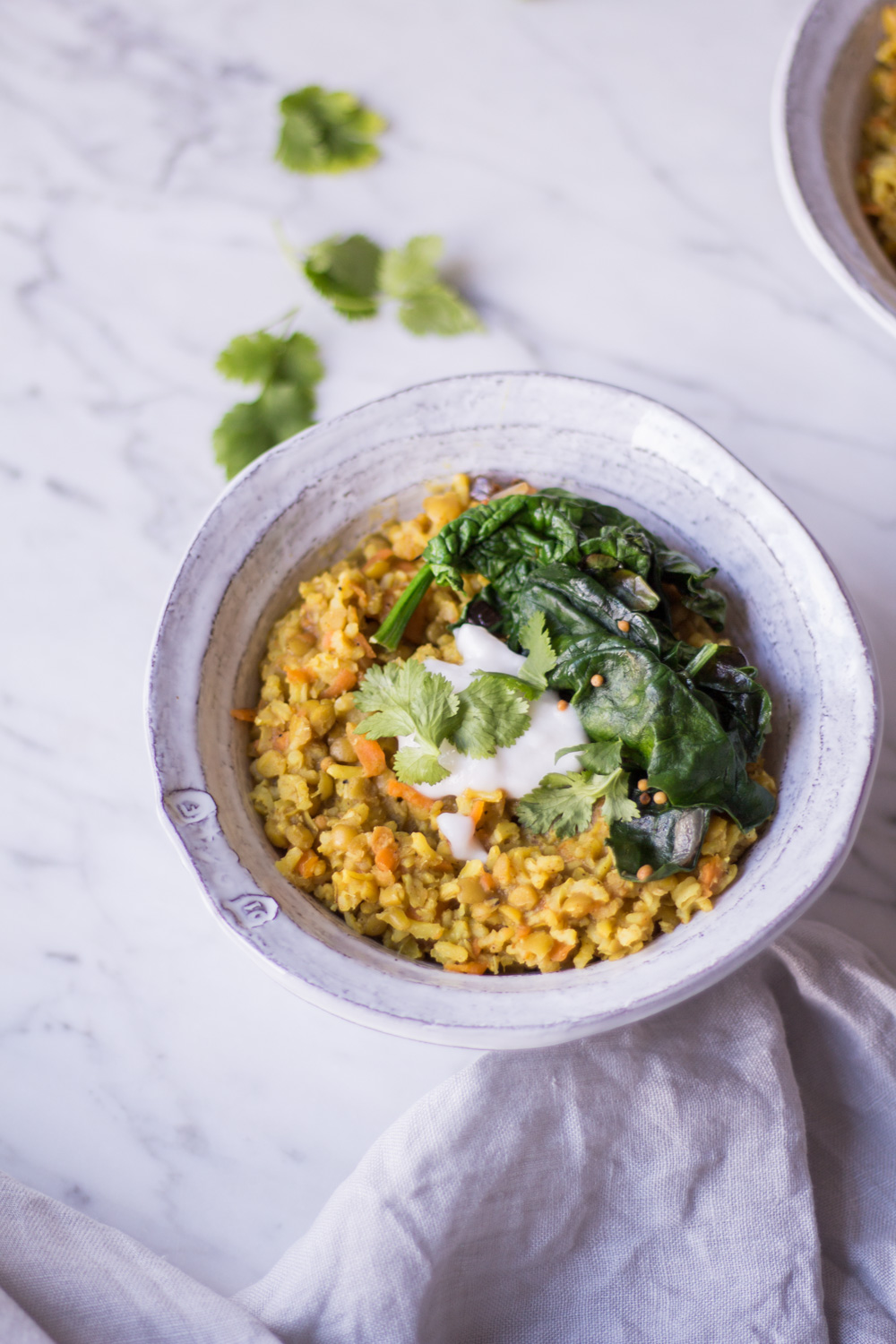 Instead, in January we’d better do everything to nourish and nurture our bodies. Here in the Western cultures, we have not been familiar with this idea for a long time, which is why we need to ask other cultures for advice. As with many issues that affect our health, Ayurveda has many answers. Kitchari is one of Ayurveda’s answers, a dish that gives us energy and at the same time also cleanses and detoxifies our body. It’s perfect for January, as it releases cumulated toxins in the body and prepared the body for the upcoming year. All this is Kitchari – an ayurvedic lentil and rice dish designed to balance the three doshas (body types). It is supposed to have a positive effect on the digestive tract, which is exactly where our body needs support during a cleanse. Since 80% of our immune system is located in the intestine, one can confidently say that a healthy gut also means a healthy body at the same time.
Instead, in January we’d better do everything to nourish and nurture our bodies. Here in the Western cultures, we have not been familiar with this idea for a long time, which is why we need to ask other cultures for advice. As with many issues that affect our health, Ayurveda has many answers. Kitchari is one of Ayurveda’s answers, a dish that gives us energy and at the same time also cleanses and detoxifies our body. It’s perfect for January, as it releases cumulated toxins in the body and prepared the body for the upcoming year. All this is Kitchari – an ayurvedic lentil and rice dish designed to balance the three doshas (body types). It is supposed to have a positive effect on the digestive tract, which is exactly where our body needs support during a cleanse. Since 80% of our immune system is located in the intestine, one can confidently say that a healthy gut also means a healthy body at the same time.
Back to Kitchari. The basic ingredient of this traditional and thousands of year old Indian dish are yellow, halved mung beans, rice and many Ayurvedic spices. I’ve come across this dish for the first time during my Ayurveda retreat last year. It is most commonly used in the panchakarma retreat, a traditional Ayurveda renewal retreat and cleanse, as Kitchari is easy to digest and thus relieves the digestive tract. At the same time, this dish contains important nutrients in form of lentils and vegetables, which the body needs to cleanse and regenerate.
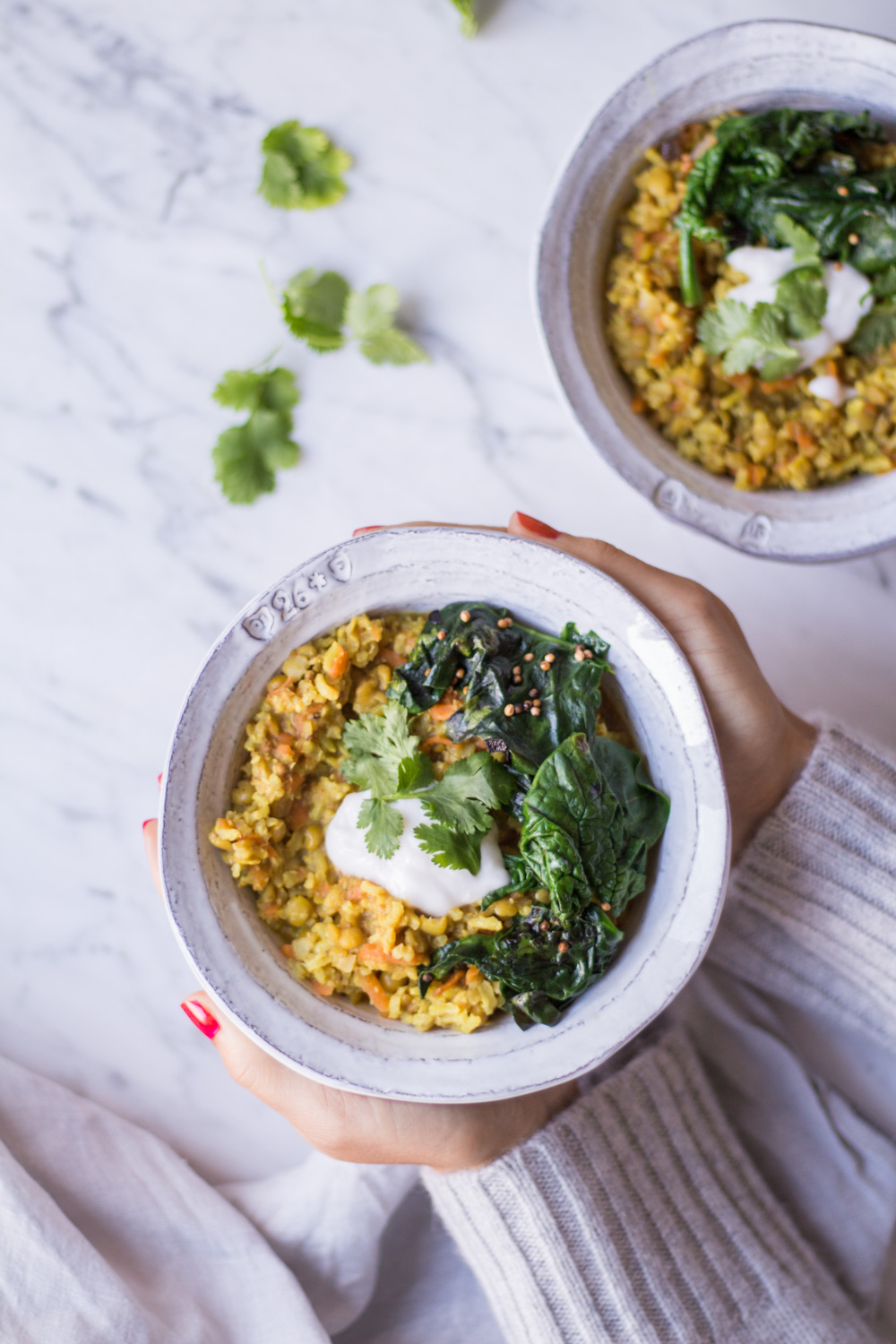 By the way, mung beans are THE food in Ayurveda. They balance the three doshas (body types), so it’s a dish for everyone. Same with basmati rice, which is served in the Ayurvedic cuisine with just about everything. Incidentally, the combination of lentils and rice is great from a nutritional point of view, since lentils lack two amino acids (methionine and cystine) contained in rice. This gives Kitchari a really good amino acid profile. It contains all eight essential amino acids and is thus a “complete” protein-rich dish.
By the way, mung beans are THE food in Ayurveda. They balance the three doshas (body types), so it’s a dish for everyone. Same with basmati rice, which is served in the Ayurvedic cuisine with just about everything. Incidentally, the combination of lentils and rice is great from a nutritional point of view, since lentils lack two amino acids (methionine and cystine) contained in rice. This gives Kitchari a really good amino acid profile. It contains all eight essential amino acids and is thus a “complete” protein-rich dish.
Heavenly for body and soul, because …
– Kitchari helps the body cleanse and regenerate itself.
– It contains a great amino acid profile.
– Kitchari is gluten free and can easily be made vegan when using coconut oil.
– Kitchari is suitable for all Ayurvedic body types.
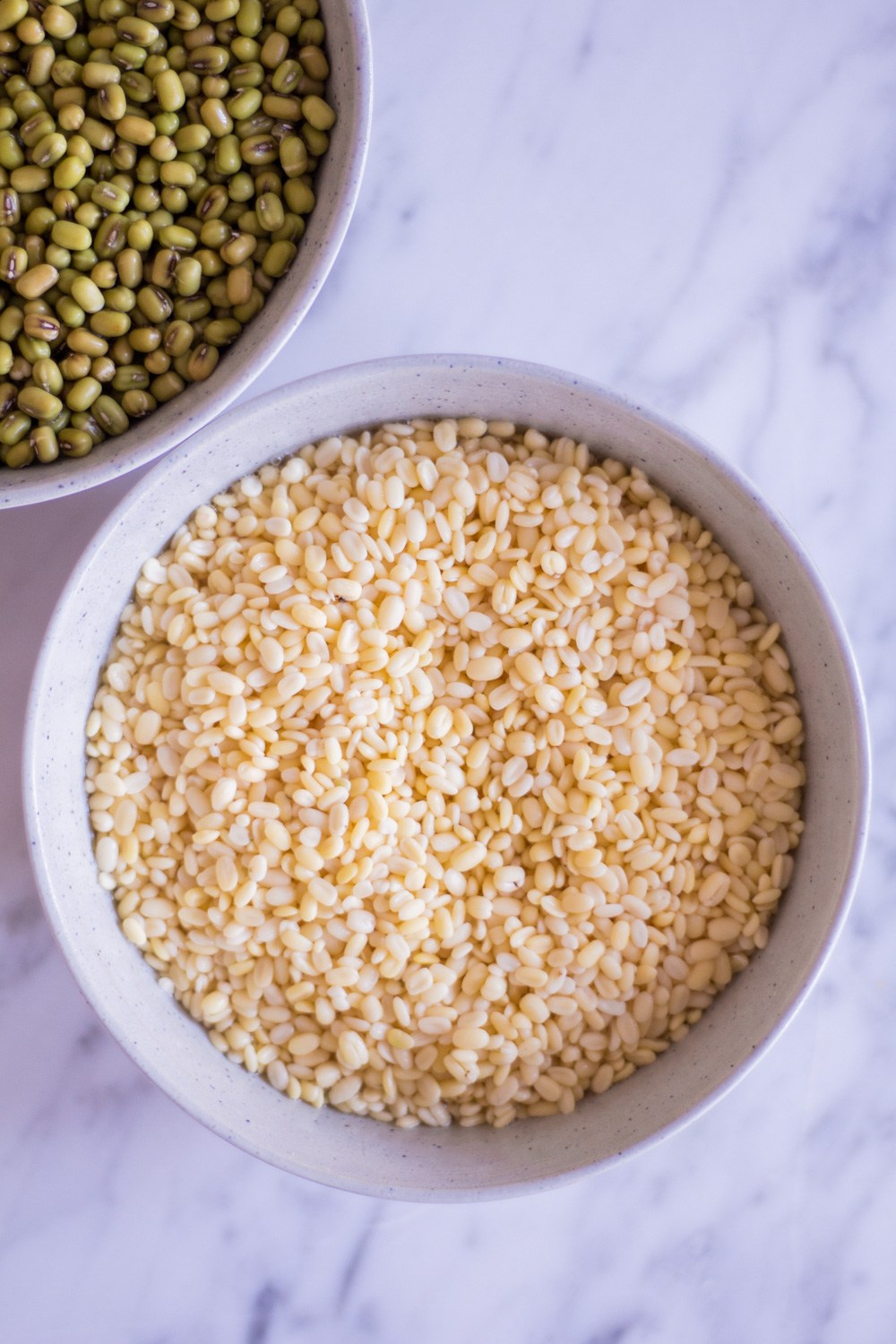 Good to know:
Good to know:
– Mung Dal are halved yellow beans that are often only available in the organic market. By the way, Dal means “halved”. Traditionally, neither red lentils nor yellow or yellow halved peas should be used for this dish. In fact, in many supermarkets you can find the thick green mung-dal beans, which you can also use for this dish. However, you should soak the green mung beans for at least 6 hours, preferably even overnight.
– Basmati Rice: According to Ayurveda, wholegrain rice is not a good idea for a detox. However, wholegrain basmati rice has more nutrients than white basmati and has a better effect on our blood sugar levels. I have used brown basmati for this dish, but in my opinion there is nothing against white basmati rice during a small body relief.
– Ghee is clarified butter, meaning it is the pure fat without milk proteins. I only buy ghee in organic quality or use organic coconut oil instead of ghee.
- 200 g yellow Mung Dal (mung dal= small split yellow lentils)
- 100 g Basmati Rice (use brown if prefered)
- 2 teaspoons of Garam Masala
- 1 thumb-sized piece of ginger
- 1 thumb-sized piece of turmeric
- ½ teaspoon cardamom
- ½ teaspoon black pepper
- 1 teaspoon ground coriander, ground cumin, whole fennel seeds, sea salt
- 1 tablespoon of ground turmeric, whole black mustard seeds, whole cumin seeds
- 1.2 liters of water, more as needed
- 2 tablesponns of coconut flakes
- 125 g of grated carrots
- 125 g of grated zucchini
- 2 tablespoons of ghee or coconut oil for a vegan option
- 250 g baby spinach
- 1 teaspoon mustard seeds
- coconut yoghurt
- Fresh coriander
- It is best to soak the mung dal and (brown) basmati rice for at least one hour. Then drain off the water and rinse off both well again.
- Put all the spices in a small bowl. Finely chop the ginger and turmeric. Cut the carrots and zucchini in small pieces or grate them.
- Heat the ghee or coconut oil in a saucepan. Add the spices, fresh ginger and turmeric and coconut flakes and sauté for about a minute over medium heat.
- Now add the lentils and rice and deglaze with the water. Boil the water, reduce the heat and simmer for about 20 minutes.
- After 20 minutes, add the vegetables and possibly pour a little more water into the pot. Simmer for another 20 minutes, stirring constantly and adding water if necessary.
- In the meantime, prepare the spinach. Roast 1 teaspoon of mustard seeds in a pan and cover with a lid, as the mustard seed will pop up. Put some coconut oil or ghee in the pan and add the spinach. Pan the spinach over medium heat in the pan until it has collapsed. Season with sea salt and pepper and serve to Kitchari.
- Season with sea salt and pepper (or more spices) and garnish with coconut yoghurt and coriander.
Kitchari means one thing in particular: many spices. Please do not run into the nearest supermarket immediately and buy all the spices I listed above. It is not the end of the world if you use only half of the spices. The most important are turmeric, fennel seeds, ground cumin and coriander.
Enjoy!
Recipe losely adapted from Kerstin Rosenberg’s “Die Ayurvedische Ernährung” published in Südwest Verlag.
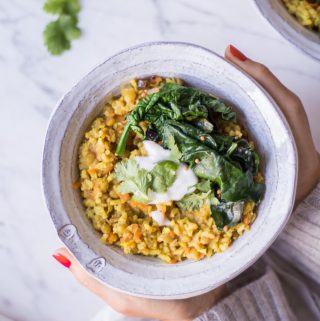

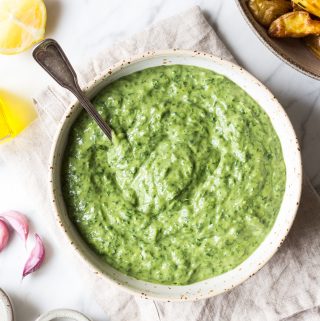
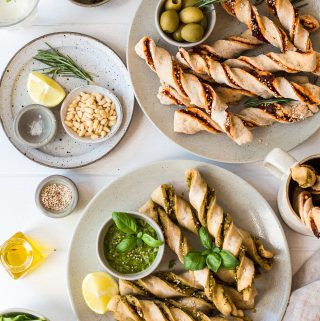
Danke für das leckere Rezept, liebe Lynn.
Ich habe das Dal mit CHANA Dal gemacht, da die anderen nicht verfügbar waren. Ich gare neuerdings mit dem INSTANT POT und habe das Gericht erfolgreich damit zubereiten können. Check!
Hallo Ilka,
ohhh du hast einen Instant Pot. Ich liebäugle damit ja auch schon so lange. Aber da ich einen Thermomix habe, wird es bei mir nicht noch ein großes Gerät geben. Gut zu wissen, dass das Rezept auch mit Chana Dal funktioniert.
Alles Liebe,
Lynn